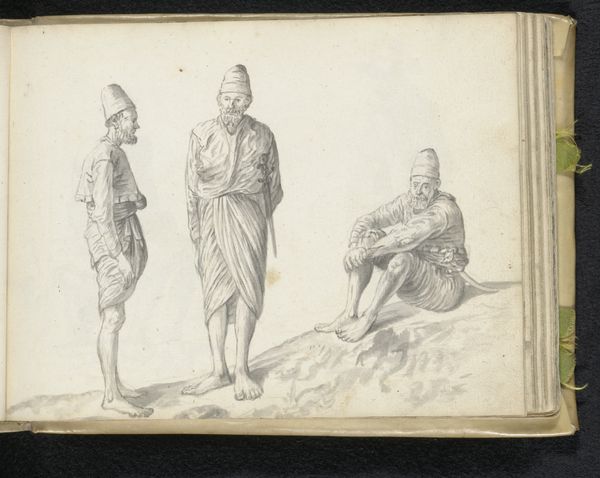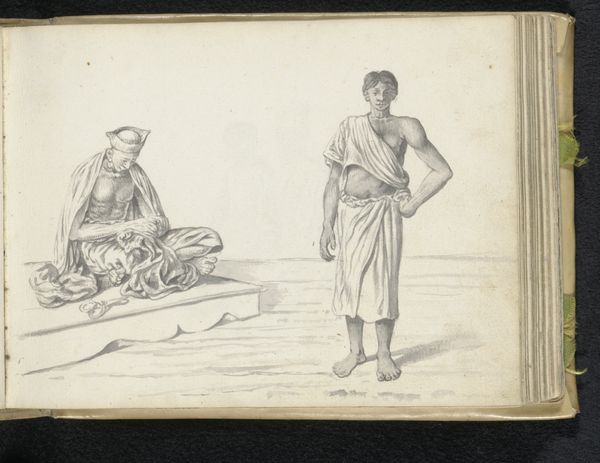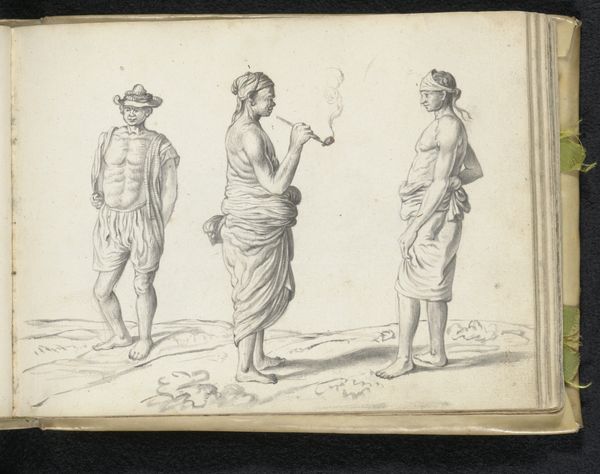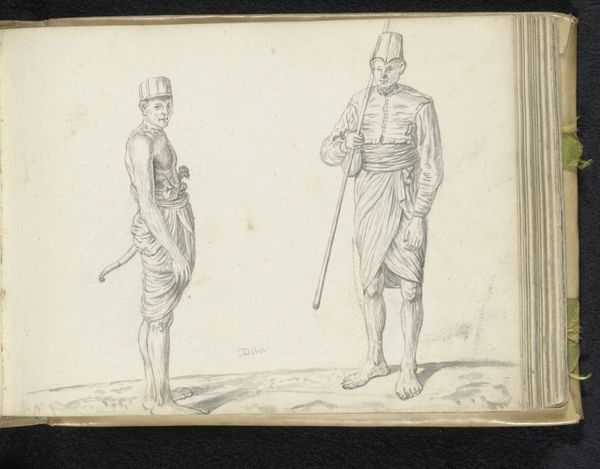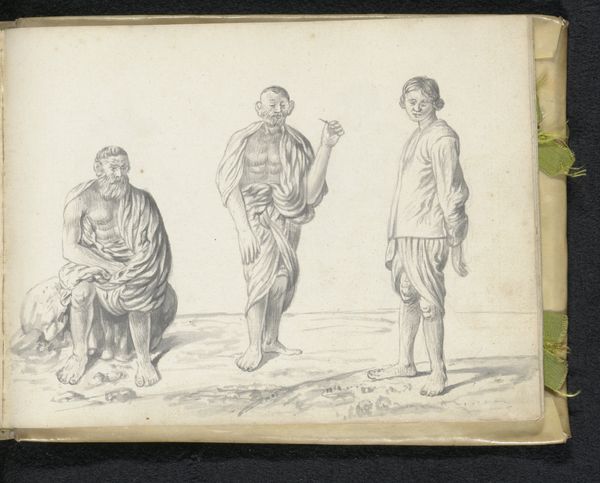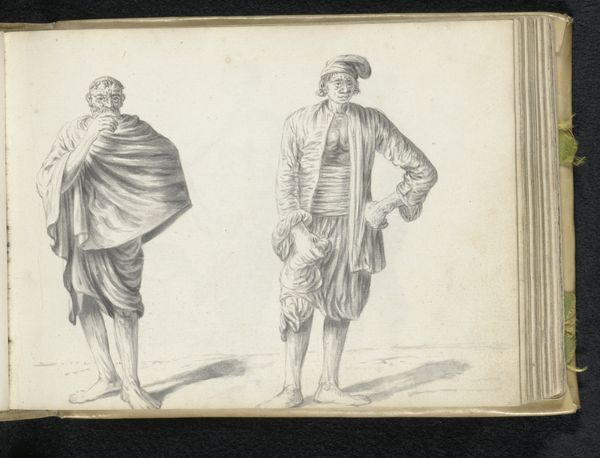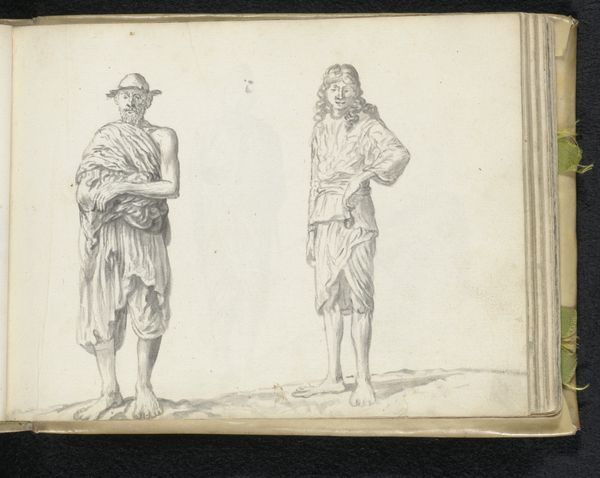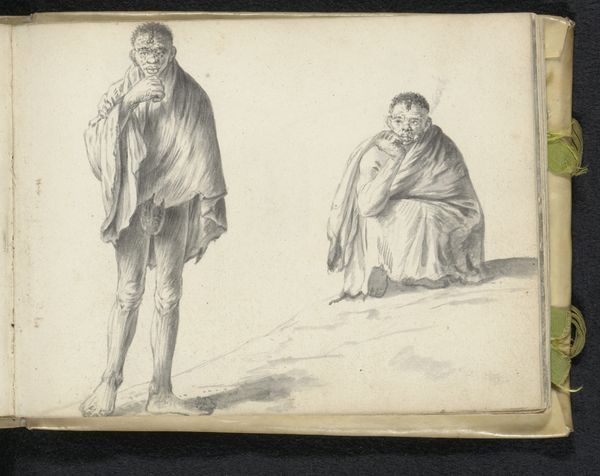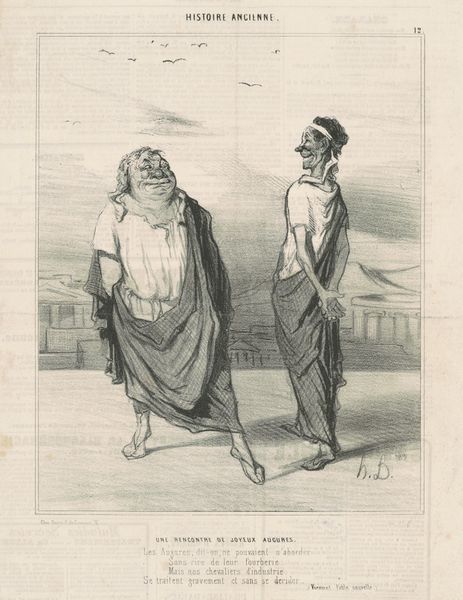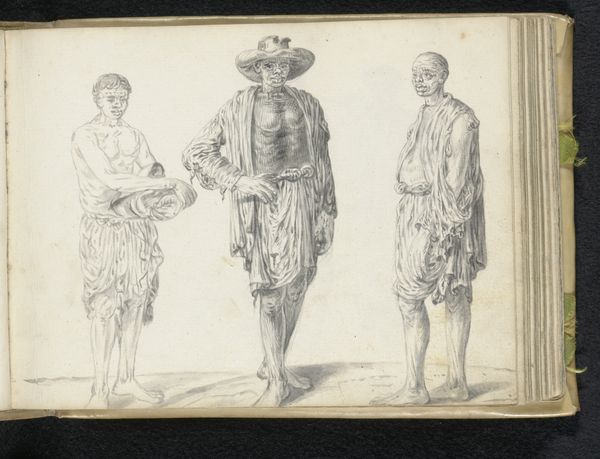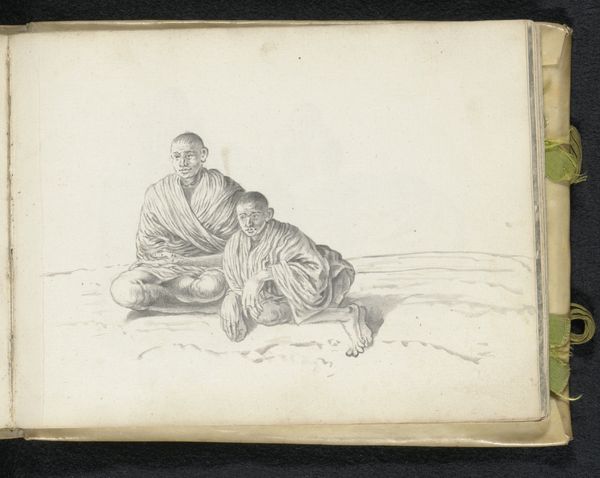
drawing, pencil
#
portrait
#
drawing
#
dutch-golden-age
#
coloured pencil
#
pencil
#
genre-painting
Dimensions: height 148 mm, width 196 mm
Copyright: Rijks Museum: Open Domain
Editor: This drawing, "Two Sinhalese Soldiers," was created by Esaias Boursse around 1662, using pencil and colored pencil. The sketch-like quality makes it feel very immediate. How do you interpret this work? Curator: What strikes me immediately is the depiction of these figures through the lens of a European artist. Notice how Boursse renders them with careful attention to detail, almost as ethnographic specimens. How do their clothes and posture signify their roles, not just as soldiers, but as representatives of a specific culture encountering a colonial power? What visual cues suggest both respect and a potential power dynamic? Editor: I hadn’t considered the colonial perspective so directly. The seated figure seems more relaxed, even introspective, while the standing soldier has a slight tension. Could that reflect a kind of internal struggle between tradition and external influence? Curator: Precisely! And look closer at their garments. Each thread and fold, meticulously rendered, becomes a signifier of identity. The colors used, though muted, likely held specific cultural meanings then. How do these details add layers to our understanding of Sinhalese identity at this moment in history, filtered through the artist's perception? Editor: So it's not just a portrait, but almost a study in cultural representation. It makes you wonder what Boursse intended to communicate to his audience back in the Netherlands. Curator: Exactly! It invites us to question our own assumptions about seeing and interpreting different cultures, then and now. Each visual element, from attire to posture, speaks volumes about cultural memory and exchange. Editor: This has given me so much to think about regarding art, colonialism, and how we read images from the past. Curator: Indeed. The layers of meaning within seemingly simple sketches are fascinating, enriching our understanding of history.
Comments
No comments
Be the first to comment and join the conversation on the ultimate creative platform.
